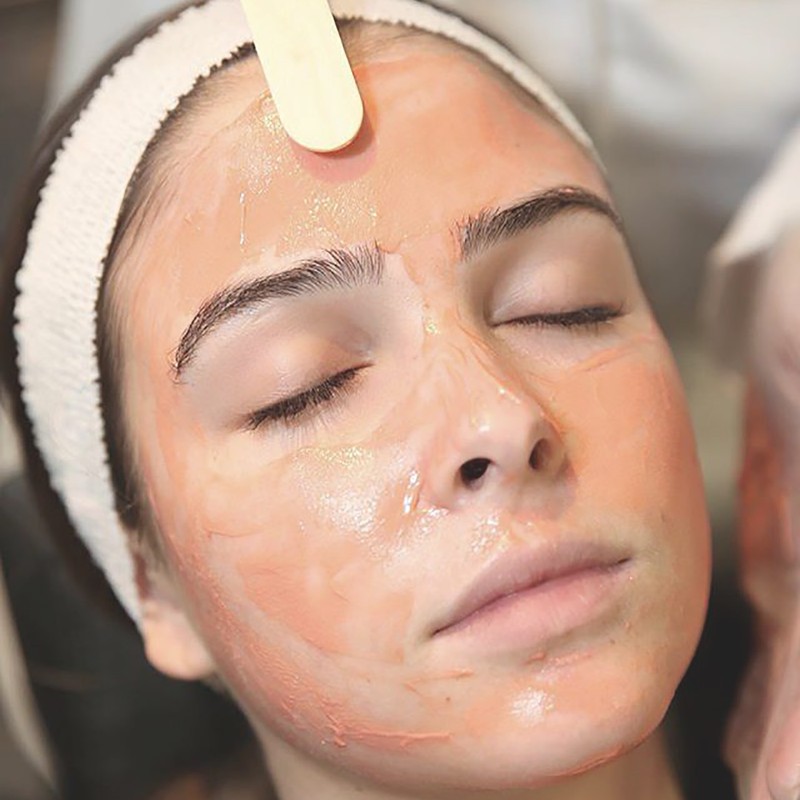A Beginner’s Guide To Chemical Peels
What exactly does a peel do?
A skin peel is a treatment that essentially removes the outer layer of skin. Most skin peels are acidic, and have an exfoliating and stimulating effect on skin cells – they get rid of any dead skin cells and surface debris, while stimulating skin cell turnover.
Why should you consider getting a peel?
By exfoliating the skin and stimulating skin cell turnover, peels can improve skin health and, in particular, skin tone and texture. Depending on their formulation and depth, skin peels can help address a number of common skin concerns such as dryness, dullness, pigmentation and acne scarring.
Are there different levels of peel?
There are different depths of peel – superficial, which only penetrates the top layer of skin or epidermis; medium, which penetrates to the depth of the papillary dermis (the uppermost layer of the skin); and deep, which penetrates to the reticular dermis (the lower layer).
Who could benefit from a peel?
Depending on the depth and formulation, anyone can benefit from a skin peel as light exfoliation and rejuvenation can help to improve the appearance of skin. The formulation of The Peel Boutique’s superficial peels and the fact that they contain lactic acid – which is naturally less irritating to the skin – makes it a safe choice for all skin types, skin colours and ages.
Do some skin types benefit more from a peel than others?
It really depends on the individual skin concerns. Peels help improve skin tone and texture due to their exfoliating and rejuvenating properties – all skin types can benefit from The Peel Boutique peels, but if you have pigmentation issues or are particularly concerned with skin ageing and fine lines, it could be worth getting a deeper peel.
Is there anyone who should steer clear of a peel?
Anyone who is allergic to any components of the peel (for example, those with aspirin allergies should avoid peels containing salicylic acid), anyone who has been on roaccutane within the past six months (due to increased skin sensitivity) and anyone who is unable to avoid direct sun exposure to the treated areas immediately after the peel. Those who are pregnant and/or breastfeeding may also be more sensitive to peels due to hormonal changes.
What are the main ingredients in a peel or does it depend on the issue you’re treating?
Most peels contain some form of acid – usually an alpha hydroxy acid (such as glycolic or lactic acid) or a beta hydroxy acid (such as salicylic acid). The acid base of a peel can then be combined with other active ingredients, such as fruit enzymes or vitamins A and C. The exact formulation of a peel can vary according to the person’s skin concerns and their skin type. The Peel Boutique peels are all lactic acid based and combined with fruit enzymes to gently exfoliate and rejuvenate the skin, and are safe for all skin types, colours and ages.
How long does a peel take?
This depends on the peel formulation. Peel Boutique treatments take 20 minutes but other peels can take a little longer.
What’s the downtime like?
Downtime depends on the depth of the peel – the deeper the peel the more downtime needed. Peel Boutique peels are superficial and due to their formulation and the fact they are lactic acid based, they need no downtime. Very sensitive skin may be slightly pink/red for a couple of hours following the treatment. Sunscreen is always applied after the treatment to protect the skin and a nourishing and hydrating serum is applied immediately post peel to help the skin heal and boost rejuvenation – you should continue to use an SPF in the days after your treatment. Retinols and products containing vitamin A, as well as acid-based products should be avoided for a couple of days, and longer for other peels depending on the depth of treatment.
Can you see the results after just one peel?
Skin is immediately brighter and smoother after one peel and skin tone and texture continue to improve after a series of treatments, as results are cumulative. If you are trying to treat a specific skin concern, a series of treatments will give better results.
Can you do a peel at home?
Skin peels can be done at home, but care needs to be taken as they are acidic and can damage the skin if not used correctly. As a result most homecare peels are much milder than those available professionally. It’s difficult to find homecare products with high percentages of active ingredients, although in my opinion, fruit enzyme containing masks can give good results. Exfoliating toners and pads are worth using at home but for a deeper treatment, it’s worth leaving it to the pros.
How often should you have a peel?
This really depends on your skin concerns. For skin maintenance and prevention, once every 4-6 weeks is sufficient. To treat a more specific concern such as pigmentation, acne or scarring, once a week for three to six weeks will likely yield better results.
Treatments at The Peel Boutique start at £55; to book a treatment or for more information visit ThePeelBoutique.com. Sign up to SL VIP today and get 30% off your first peel at The Peel Boutique; click here for more information.
DISCLAIMER: We endeavour to always credit the correct original source of every image we use. If you think a credit may be incorrect, please contact us at info@sheerluxe.com.


